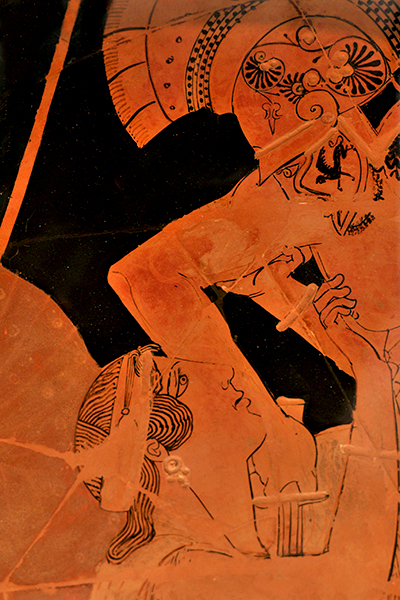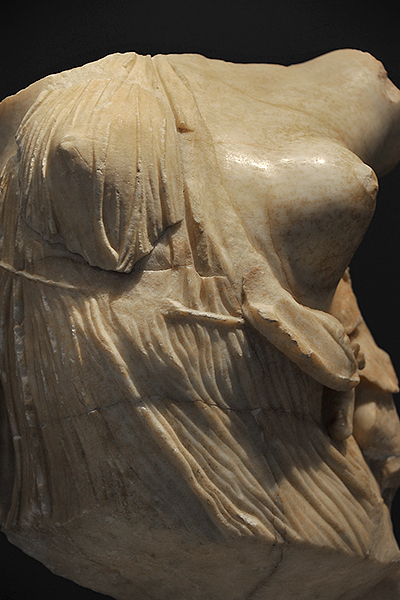
"She [Penthesilea] was made a wonder of beauty even in her death by Aphrodite glorious-crowned, the Bride of the strong War-god, to the end that he, the son of noble Peleus, might be pierced with the sharp arrow of repentant love. The warriors gazed, and in their hearts they prayed that fair and sweet like her their wives might seem, laid on the bed of love, when home they won. Yea, and Achilles' very heart was wrung with love's remorse to have slain a thing so sweet, who might have borne her home, his queenly bride, to chariot-glorious Phthia; for she was flawless, a very daughter of the Gods, divinely tall, and most divinely fair."
Quintus Smyrnaeus, The Fall of Troy (I.891ff)
As Achilles thrusts his spear into the throat of Penthesilea, Queen of the Amazon, she looks up at him, suggesting that, indeed, he may have fallen in love with her just as she died.


The amphora, which is in the British Museum, is dated to about 540-530 BC and signed by Exekias, the finest of all black-figure painters and the artist for both the depiction of Dionysus and the dolphins on the cylix in the Staatliche Antikensammlungen (Munich) and the amphora showing Achilles and Ajax playing a board game in the Vatican Museums. The marble fragment of Penthesilea can be dated simply from the fact that her chiton or tunic has exposed the left breast. She is being supported by Achilles, whose hand is barely visible. The statue, which is in the Palazzo Massimo alle Terme (Rome), is a Roman copy of a first century BC Hellenistic original.
References: Quintus Smyrnaeus: The Fall of Troy by (1913) translated by A. S. Way (Loeb Classical Library). The detail of Penthesilea (top) is from a vase painting dating to about 460 BC in the Staatliche Antikensammlungen (Munich).